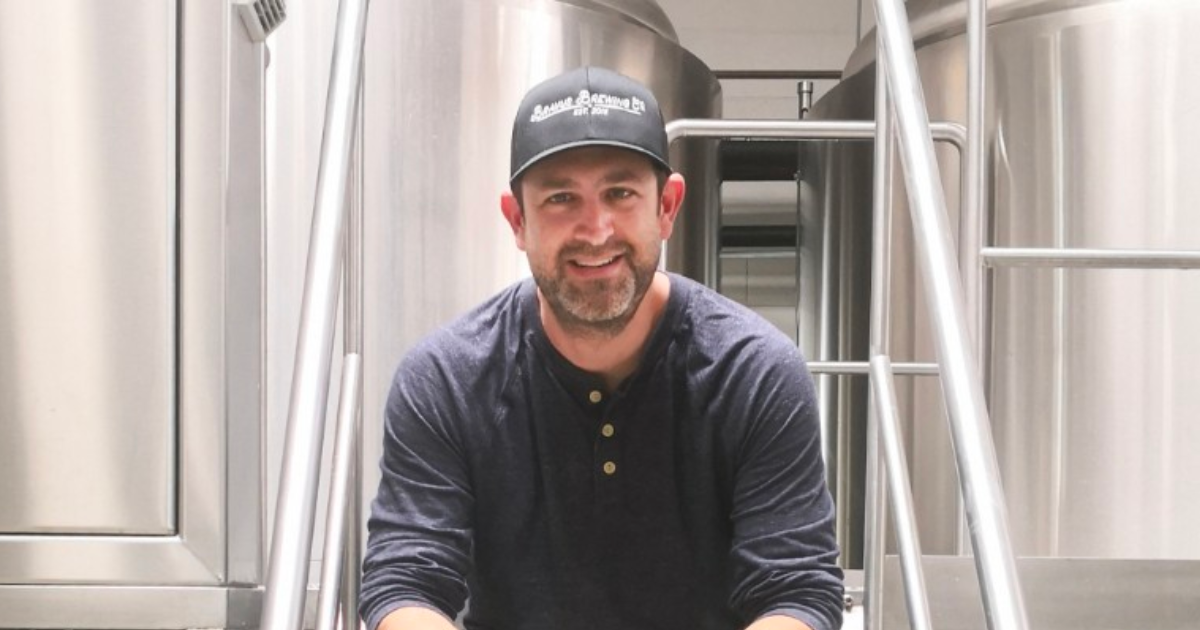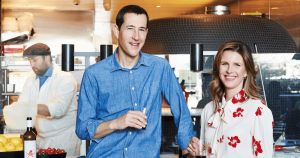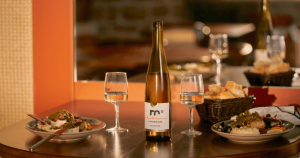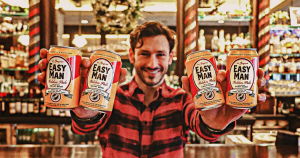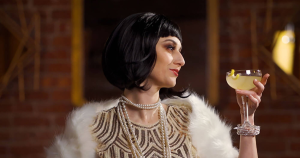Ten years ago—when non-alc beer meant O’Doul’s—Philip Brandes started to reshape the non-alc narrative with craft brews that rival their alcoholic counterparts in taste. In this interview, Philip details how he went from software developer to non-alc trailblazer, sharing his formulation process, his insights on shifting consumer preferences, and a bit about his imminent move into spirits and wines.
You claim to be the first craft non-alc beer. For readers who associate non-alc beer with O’Doul’s, can you talk about why what you do is different?
Ten years ago, I wasn’t even thinking about craft beer. I was a lonely software developer. I’d been doing that all my life. In 2014, a good friend of mine from high school reconnected with me.
He’d always been a craft beer guy, just super into it. Even back when we were in high school, he would home brew. I’d go to his house and he would be brewing up some crazy things, something called an IPA, which I had no idea about. My beer world was Bud Light, Coors Light, and Natural Light. I took a sip of one of his concoctions and spit it out—it was disgusting. I’ll stick to my Bud Light, thank you. But he was onto something. He was a pioneer in craft beer and stuck with it.
When I reconnected with him, he wasn’t in the best shape. He was drinking a bunch of these IPAs and brews around the time they were trying to figure out how much booze they could stick into a beer: double IPA, triple IPA, imperial style. They made it to 22%, something crazy. Beer was always about drinking them fast, drinking them cold, drinking a lot of them. Surely you can’t do that with a 22%. That’s a cocktail, not even a beer.
So, he was struggling a bit. He gave it up, had to make that decision, and he went to the O’Doul’s of the world. When we’d go to a bar or a restaurant he would sort of whisper to the waiter, “O’Doul’s beer.” Even when the bottle came to the table, he would actually turn it around so that no one knew he was drinking a non-alc beer
Of course, when he took a sip, it was even worse, right? Because he was used to these wonderful IPAs and he was drinking something that was far, far different. So I felt bad. I go: “you know what? Let’s do something about this. You teach me how to home brew. Let’s figure out a new way to make a great tasting non-alcoholic IPA.” That’s what I did. I built a little brewery.
He taught me how to home brew and I ended up hiring this fabulous homebrewer—I call her a crazy Russian scientist. She wrote her thesis on brewing. She knew the ins and outs of fermentation. So, I dove into some research and realized pretty early on by tasting everything else out there: removing the alcohol was just not the way to do it.
I spent some time working on a new process and after a year of making just the worst things you can imagine, finally, it was that peanut butter in the chocolate moment: “aha, I have something.” I finally came up with a great tasting non-alcoholic IPA as our first SKU. By that time, my wife said, “look, I appreciate you spending all our life savings on this.” She’s an accountant, of course. But the rest is history. It’s been a crazy ride.
I appreciate the bravery to do something that really didn’t have precedent at that point. I’m curious about consumer reaction. You were bringing people in the year 2015 from the O’Doul’s mindset to: here’s something craft and non-alc. How was reception early on? Was it difficult even to explain to distributors or retailers what you were doing?
Absolutely. I remember walking into our first account saying, “hey, we have a great non-alc craft beer” and they’re like, “what? How much do you want us to charge our customers?”
But the next day, I went to an account and they took a case. I’ll never forget this. I got a call that night and the owner said, “we need another case.” I asked, “what happened? Did you drop the first one?” He said, “no, we had two people come in and they went through our entire case of your beer in one sitting.”
I was like: “holy crap.” Non-alc beer had a small target audience. But when something good finally came on the scene, you had a smaller amount of people drinking more of the product.
Beyond that successful first product, how did you approach formulation and thinking about extending the product line over time?
We’re fortunate. It was when craft beer was coming out. It was clear what people wanted. IPA was number one and stout was number two. That roadmap dictated our early days.
Then, we differentiated ourselves because people were slapping new labels on old technology like vacuum distillation or filtration. We had to pivot a bit. Everyone had an IPA, so we came up with a wonderful fruit-forward blood orange IPA, which was cool. Everyone had a stout, so we came up with a peanut butter stout.
When you look at the demographic change as well, Gen Z didn’t grow up in the craft beer period. They grew up with kombucha, went for White Claws. They wanted something that had flavor, that’s more approachable and easier to drink. So we fell into it by making more flavorful and approachable beers. That’s what dictates our styles today.
Speaking of demographics, I’m curious about your approach to the global market. I was actually in Japan in November and I saw some of your products in a very tiny cafe in an unassuming neighborhood. Was this just some hyper fan who’s finding a way to import Bravus, or are you looking at global domination?
Absolutely. Some countries are way ahead of the curve when it comes to non-alc. Countries in Asia and Europe, Australia. With America, again, there was a period of “how much booze can we squeeze into a beer and how cheap can we get it?” right? Thankfully, we’ve caught up.
So yes, we’re distributing in Japan. We just sent a load of beer to South Korea. We’re in Australia. We’re looking at South Africa. There are a lot of these great markets now that have adopted Western culture in other regards. Craft beer is part of that.
I love those markets because they kind of already get it, in a way.
That’s interesting. Everyone thinks it’s New York and LA leading the charge on this movement. I was surprised in Japan to see so many non-alc beers, even ones from the big guys, Asahi, Suntory. I’m curious about your view on the Heinekens of the world coming out with non-alc skews. I saw Molson Coors’s CEO said that their turnaround in 2024 is going to be all about non-alc beers.
Technology has definitely changed. Heineken 0.0 tastes like a Heineken, props to them. It does such a great job. They’ve led the charge in the macros. And, look, we all need awareness. People still haven’t heard of non-alc beers, and there’s been the assumption for decades that great-tasting non-alc doesn’t exist.
It’s great to see some people doing it right. I think some of the others are using old technology to go along with the hype. It’s not easy to make great-tasting non-alc beer. With enough marketing dollars, though, you can make a poor tasting product pretty popular, right?
But it’s great to see retail expand their shelves, which is what we need. It starts with convincing the retailers—that’s the driver of distribution.
Looking ahead, I’m curious about your view on the future of social drinking. Younger generations are drinking less. In this context, what role do you think beer—whether alcoholic or non— is going to play in how we socialize and connect?
Younger generations love experiences. They’re going out, they’re just not drinking as much when they do. For us moving forward, one of the big focuses this year is on-premise. Most non-alc beer has been off-premise, right?
This goes back to awareness. It’s that waiter, right? They might need to explain it a bit to you. But people who are going out want to pair something with their meal. We have an account here in Laguna Beach that does about 10 cases a week because they have a couple of restaurants. Importantly, they put us in the alcoholic section. We’re not in that Diet Coke, Snapple section. We’re next to the beers and it says non-alcoholic. It’s just bringing awareness that great tasting alternatives exist.
As you spread awareness about Bravus, are you leaning into the non-alc aspect and really going after those who are actively looking to reduce consumption? Or are you saying, “hey, this is a sophisticated, tasty, flavor-packed beverage that you can enjoy with dinner?”
When we first started, yes, it was beer: “this is a beer. Don’t call it anything else but a beer. This is not a beverage.” But, as the category matured, as the demographics skewed younger, it became: “this is an approachable beverage.”
The hardest part, again, is just awareness and getting that liquid to lips. Having them at least try the product, whether it’s sampling through events. Education within restaurants and bars, getting them to try things.
They want all the things that beer really hasn’t been, historically.
That makes a lot of sense, especially with alcoholic beer waning in popularity lately.
Yet another reason for non-alc brands to position themselves as: “here’s this great thing, here’s what we are, here’s everything you get with this experience.”
What are your biggest priorities going forward? What are some of the challenges that you’re anticipating?
First, on-prem, as mentioned, and draft—I think it kind of goes hand in hand. Not many out there are doing draft. Just from a cost perspective, a can is so expensive. I was always envious of breweries that can do draft and do it successfully. We’re lucky we can do draft nationally now.
Second, expansion into adjacent products. We’re using our technology and we’re launching a new brand in Walmart this spring: WineO. Wine Zero. We call it a middle finger to the wine establishment because it’s non-alc. It’s in a can. It’s this crazy, nostalgic red can, almost like a solo cup. It’s this very anti-wine wine, but ironically, it tastes better than any other non-alc wine out there. Most are missing the tannins, astringency, dryness, mouthfeel. So I’m very excited about that.
Then there’s a natural progression into spirits and RTDs. Using our technology to give you a great-tasting tequila. La Planta is our first one, and we’re doing this beautiful bottle. It tastes like tequila. You’d be hard pressed to tell our tequila from the rest. It burns, but not in the way other manufacturers use chili peppers, because that’s the wrong burn. It’s got a real alcohol burn to it without being alcoholic. It’s crazy. I’m super excited about that. That brand’s called Phil & Goode. Then we’ll have a mojito, a margarita, a Cuba Libre. I’m really excited about that.
You have to expand, right? Beer is the biggest dollar amount in non-alc, but when you look at growth, it’s wines and spirits. That’s the future.


